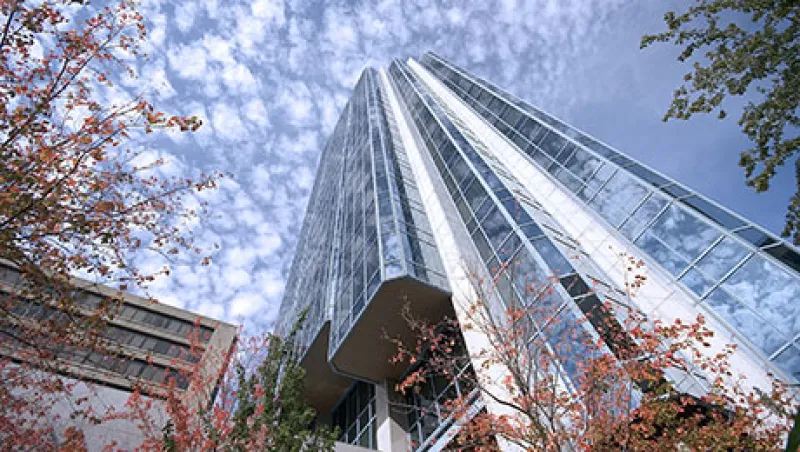It’s time to retire the term “recovery” as it relates to this economic cycle. On most counts, the U.S. economy is stronger now than it was in 2008. Although economic growth since the late-2000s recession has been moderate and fitful, cumulative growth has been substantial. It’s no wonder consumer confidence is now above its long-term average.
How does commercial real estate fit into this picture?
As a whole, markets certainly have recovered, though the degree and depth vary sharply among sectors and according to different metrics. In terms of property fundamentals, apartments were the first sector to recover, reaching new peak occupancy and rents in 2011 — five years ago — whereas industrial properties got back to peak occupancy in 2014 and hit new peak rents last year. The situation is more mixed for office and retail sectors: Office vacancies are coming down but are still elevated above the past peak levels, and retail is still really hurting, with little improvement in occupancy and almost no gains in rents overall since the recession.
For both office and retail, general data mask the differing fortunes within each sector. For office, it’s central business district markets that are doing well, whereas suburban submarkets lag. For retail, the top centers and metropolitan locations are doing fine, with record rents and occupancy, whereas most other areas are struggling in the face of the rise of e-commerce and a surplus of store space, leading to a bifurcated story.
Transaction volumes have also seen a strong recovery. With good sales activity in late 2015, transaction volumes for commercial real estate are back at their prior peak — a level many believed we would not see again for many more years. About $460 billion in assets changed hands last year in the four major property types — apartments, industrial, office and retail — essentially matching the $461 billion recorded in 2007.
A major factor in attaining this level is the record pricing in many markets. Here again, the trends are bifurcated. According to data from Moody’s and Real Capital Analytics, prices in the top six metro centers — Boston, Chicago, Los Angeles, New York, San Francisco and Washington — are up about 20 percent over the prior peak after adjusting for inflation, whereas prices elsewhere are still trading at a small discount but getting closer. Not all sectors in these metropolitan areas are seeing pricing escalate the same. Office assets in central business districts and apartment properties are both up about 40 percent, although neither industrial or retail has regained its prior peak — though each is edging closer. Unlike retail, which will likely continue to see challenges because of generally lower demand, the industrial segment will probably pick up and return to higher valuations.

Click image to enlarge.
By historical standards, pricing over the past year has been reaching elevated price levels, which caused some moderation to occur at the tail end of 2015. That trend will possibly continue further into 2016. Overall, though, commercial property markets have more or less recovered. This fact holds significant implications for real estate investors. For one, there are strong demand drivers on the tenant side, pointing to the likelihood of occupancies and rents to continue to grow in 2016. Meanwhile, investor demand — in terms of both domestic and foreign buyers — remains strong as well. These factors together should help property values remain stable, or in some cases, even push prices up.
Most broadly, the rising tide of economic growth — and let’s be clear that our economy is still growing nicely and shows no serious signs of declining , notwithstanding recent financial markets jitters — will float many boats, but not all. If an asset is still idle seven years into expansion, or a submarket continues to underperform, it probably means structural changes have shifted market support away from that asset or submarket.
We’re getting to the end of this economic cycle. Analysis of current conditions and historical cycles suggests that even if a recession seems unlikely in the near term, we’re clearly closer to the end of this expansion than the beginning. Investors sitting on underperforming assets waiting for the cyclical recovery to bail them out might be waiting a very long time.
Andrew Nelson, based in San Francisco, is the U.S. chief economist for Colliers International, a commercial real estate services organization.
Get more on macro.






